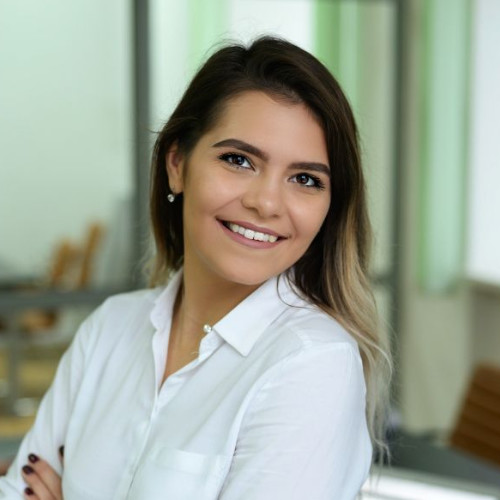
E-learning and DALL-E artificial intelligence: what benefits can be obtained
No sooner had the talk about ChatGPT died down than a new useful tool appeared that can be used to optimize corporate e-learning.
ChatGPT is a great time-saver when working with texts, and the new DALL-E graphical neural network will help you create unique images. But there are nuances.
What is DALL-E and how to use it?
And how can it benefit your corporate eLearning?
We’ve tested DALL-E and are ready to share the details of the new AI, examples of its application in corporate eLearning, and its analogues.
What is DALL-E?
On March 21, Microsoft’s Bing chatbot added the ability to create images based on text descriptions using the DALL-E graphical neural network. As a result, Bing users will be able to create visuals in one place and for free.
DALL-E is a neural network created by OpenAI, a company that researches and implements artificial intelligence. It is the same company that develops ChatGPT. With the help of textual queries and prompts set by the user, DALL-E creates images in several variants. Of course, the image created in this way will not be perfect. However, it will take a few seconds to create it.
In addition, the network is constantly learning and updating its capabilities, so over time, DALL-E will better understand the requests and this will improve the quality of images.
How to use this neural network?
1. For Bing users, this neural network is integrated into a chatbot called Bing Image Creator. It started appearing on desktops and mobile devices on March 21 this year. However, it is worth noting that this is happening gradually and Bing Image Creator is not yet available in all regions. The chat or search engine itself can be launched by finding a blue icon with the letter “b” in the Windows startup (in the upper right corner).

2. Bing Image Creator is also available for Microsoft Edge users. You can find it by clicking on the Image Creator icon on computers and mobile devices. And later, as promised by the creators, it will be integrated into Edge using a new Bing button in chat mode. The icon looks as follows:


3. If you are not a Bing or Edge user, you can use the direct link. Queries can only be made in English, but other languages should be available soon.
What are the benefits of a graphical neural network in corporate eLearning?
1. Designing visuals for welcome presentations, product presentations, etc.
The DALL-E graphic neural network can create images that will help attract attention and emphasize key points in a presentation. It can generate logos, illustrations, and other images that visualize the main ideas and concepts of a company. Therefore, DALL-E can be a tool that will make your presentation more effective.
What to do: A neural network creates images based on keywords. So enter the query you need, for example: “welcome presentation”, “presentation”, etc.




Examples of results for the “Welcome presentation” query
2. Design for tasks and tests
Since DALL-E can create images from textual descriptions, it can be used to create visuals for training tasks and tests. For example, you can use it to illustrate questions or answer options. It will help employees understand what answers are expected of them.
What to do: try asking DALL-E a text command to illustrate the question, for example: “How can AI be used in e-learning?”.




Visualizing a question from the test
3. Creating unique badges and icons (especially when gamifying corporate learning)
The graphic neural network will also make it easier for you to gamify corporate learning. Thanks to it, you can create visuals for badges and icons for your company’s LMS platform. Such images will be in good quality (DALL-E can generate 1024×1024 illustrations), and they will be truly unique and inimitable.
What to do: decide what exactly should be on the icon, provide a broad description, including colors (for example, branded), style, and other criteria. For example, the request “A round metal badge with an image of an Olympic cup with stars around it and a laurel wreath” resulted in the following badges.



Creating badges in DALL-E
4. Simplifying collaboration with a designer
If you still want to remain faithful to the collaboration with designers, a neural network can only be used as an additional tool for agreeing on references and specifications. This applies not only to corporate training. You can use DALL-E to explain to a designer your vision, color scheme, or style of the illustration you want to receive.
What to do: describe your expectations in detail to DALL-E, for example: “design of the IT company’s website in green and blue colors”, generate images, select the best ones and send them to the designer as references.
It will make it easier for the designer to create a technical task and speed up the work on it. However, a neural network can create images from words, but it cannot understand contexts or meanings. As a result, the images created may not meet the needs of the designer.






References for designers
What other image generation tools exist besides DALL-E?
As society evolves, so do AI tools for creating illustrations or images. Here are some more free services you can use:
- Deep Dream Generator — is a platform for creating and editing images. The service has three work formats: text-based generation, tools for deep AI processing of the original image, and the use of graphic filters (art styles and genres). The site also offers the possibility to share created illustrations with other users and view their work. The number of free generations after registration is limited.
- Hotpot — is another service where you can generate images based on a text query. In addition to textual keys, the service also needs to know the type of visual effect of the image and the desired size. The platform’s advantage is the ability to apply filters, add text, edit colors, etc.
- Night Cafe — is an image generator that not only collects graphic elements, but also adjusts them to the style you choose. You can create images without registration. At the start, you get 5 credits, and after using them, you have to pay $0.08 for each new one. You can also earn points by commenting, posting messages, etc.
- Dream by WOMBO — is a website and mobile application that allows you to generate images without registration. The service generates images based on a text command and in the chosen style. The main disadvantage of the service is the low resolution quality of images.
Pros and cons of using a graphical neural network in corporate e-learning
Pros:
- Absence of property rights
All generated images can be freely used for your needs, as the actual copyright holder of the image is the person who generated it. The services do not have any rights to the illustrations you create. - Simplifying visualization processes
A graphical neural network makes it easier to prepare visuals for presentations, assignments, graphs, or tests. It can also be a great tool for creating backgrounds for videos, animations, badges, and other visuals for gamification and microlearning. - Inspiration and references for designers
DALL-E or other similar resources will come in handy when collaborating between a customer and a designer, as they can help create references, draw up technical specifications, and simply inspire. - Availability
Although a neural network cannot completely replace a designer, its availability becomes a significant advantage. Most generators are still free or at least have a free trial period. - Resource efficiency
Using a neural network can save you time and money: images are generated in seconds, often in unlimited quantities, and free access to services allows you to use them on an ongoing basis.
Cons:
- Surrealistic images
AI has not yet reached the level of image quality that can be created manually using a graphic editor. The images created by DALL-E are surreal, often with distorted text, extra fingers or eyes on people, etc. - Language limitations
Currently, queries can only be entered in English, which makes it a bit difficult to create the right team for those whose English level is not high. In addition, knowledge of specific terms such as colors, structures, or styles is required. - Details of the query input
Since the image is generated based on your text sentence, it should be as detailed as possible: the more details you give DALL-E, the more likely it is that the generated image will be similar to your idea. - Ethics
DALL-E, like other graphical neural networks, is trained on the basis of existing image databases. Therefore, if the image created by the AI suddenly has features of someone’s copyrighted illustration, there may be problems with its commercial use. - Public criticism
As mentioned above, the fact that neural networks are trained on illustrations by real artists and artisans creates a moral dilemma in society. You have to be prepared that your use of DALL-E-generated images may cause public criticism.



































